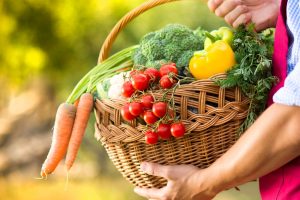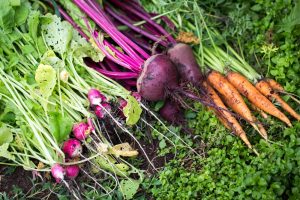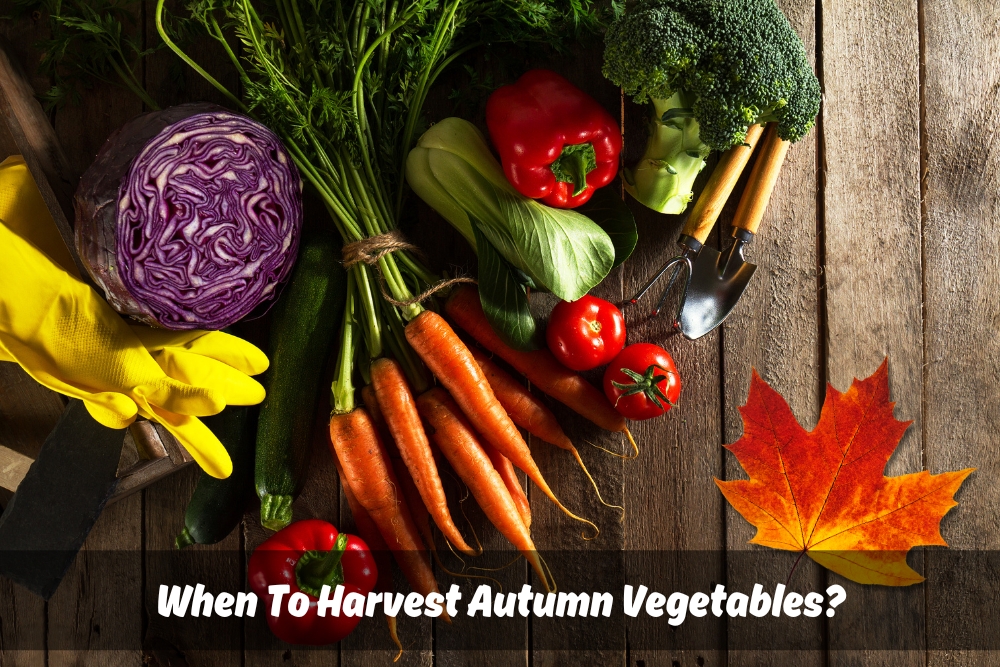Autumn brings a rich bounty of vegetables, but knowing precisely when to harvest them can make all the difference in flavour and freshness. Harvest too early, and they might lack flavour and texture. Leave them too long, and frost damage can spoil the harvest.
This handy guide will equip you with the knowledge to harvest your autumn vegetables at their peak, ensuring you enjoy the very best your garden has to offer.
When should you harvest autumn vegetables?
Understanding frost dates is key to determining the right time to harvest your autumn vegetables. Frost can damage or even kill sensitive plants, so it’s important to know when to expect it in your region. By consulting local weather forecasts or gardening resources, you can pinpoint the average first frost date in your area and plan your harvest accordingly.

Identifying maturity signs in different vegetable types is another essential aspect of timing your harvest. Leafy greens, root vegetables, brassicas, and other varieties each have their own visual cues indicating readiness for picking. Learning to recognise these signs will ensure that you harvest your vegetables at their peak flavour and texture.
How can you tell if your autumn vegetables are ready to pick?
Different vegetables give different clues about when they’re ready to pick. Here’s a quick guide to some common autumn crops:
- Leafy greens: Look for vibrant, full-sized leaves. For a milder flavour, harvest baby greens before they reach maturity. A light frost can actually enhance the flavour of some leafy greens like kale and spinach.
- Root vegetables: Root size is your best indicator. Carrots, beetroot, and parsnips should have reached their desired thickness. Give them a gentle tug – if they resist easily, they’re likely ready.
- Brassicas (broccoli, cauliflower, Brussels sprouts): The florets are the key. For broccoli, aim for tight, compact florets with dark green buds. Cauliflower heads should be firm and white, with no yellowing. Brussels sprouts should be firm and about the size of a golf ball.
- Beans: Snap beans should snap easily when bent, and the pods should be plump and free of blemishes. Peas are ready when the pods are full and the peas inside are well-developed but still tender.

Tip: When in doubt, don’t be afraid to do a taste test! A quick sample is the best way to determine flavour and texture.
What should you do with autumn vegetables after harvesting?
Crisp, colourful, and bursting with flavour – freshly picked autumn vegetables are a true treat! But to ensure they stay delicious and ready to enjoy, proper storage is key. Here’s how to maximise the life of your autumn harvest:
- Storing for later: Leafy greens like lettuce and spinach will last a few days in your fridge’s crisper drawer. Keep them away from ethylene-emitting fruits (apples, pears, bananas) that can speed up spoilage.
- Root cellar savvy: Root vegetables like carrots, beetroot, and parsnips prefer a cool, dark, and well-ventilated space. A root cellar or garage is perfect, but a basket in a cool corner will do in a pinch.
- Brassicas in the fridge: Broccoli, cauliflower, and Brussels sprouts will hold up well for a week or two in the fridge. Keep them in a loosely closed bag to prevent drying out.
Can you extend your autumn harvest?
Don’t let the first frost spell the end of your autumn harvest! Here are some ways to extend the bounty:
- Frost protection: Use row covers, cloches, or even old bedsheets to protect your vegetables from light frosts.
- Winter sowing: Some vegetables, like kale, spinach, and carrots, can tolerate colder temperatures and can be harvested throughout winter if sown in late summer or early autumn.
How does mulching benefit autumn vegetables?
Mulching your garden beds in autumn offers several benefits for your autumn vegetables:

- Moisture retention: Mulch helps retain moisture in the soil, which is crucial during the cooler autumn months when evaporation rates can be lower. This is especially important for vegetables that continue to grow throughout autumn.
- Temperature regulation: A layer of mulch can help insulate the soil, protecting the roots of your vegetables from sudden temperature drops. This is particularly beneficial in areas with unpredictable autumns that can experience both warm spells and early frosts. The insulating effect of mulch can help prevent the soil from warming and drying out during unexpected warm days, and conversely, can help buffer the roots from sudden cold snaps.
- Weed suppression: A layer of mulch acts as a physical barrier, helping to suppress weed growth. This reduces competition for water and nutrients from your autumn vegetables, allowing them to focus their energy on producing delicious and nutritious produce.
- Winter protection (optional): In some regions with milder winters, a thicker layer of mulch applied in late autumn can provide additional protection for some cold-tolerant vegetables like kale, spinach, and carrots. This can potentially extend your harvest into the winter months, allowing you to enjoy fresh vegetables for a longer period.
Important note: When applying mulch in autumn, avoid using materials that decompose too quickly, as this can attract unwanted pests like rodents. Opt for materials like shredded bark, wood chips, or straw that decompose slowly and provide a longer-lasting benefit.
What resources can help you determine autumn harvest times?
When it comes to harvest timing, knowledge is power. Here are some resources to help you:
- Seed packet information: Seed packets usually include “days to maturity” information, which is a great starting point.
- Online planting guides: Many gardening websites and apps offer detailed planting and harvesting information specific to your region.
- Local gardening resources: Don’t underestimate the value of chatting with experienced gardeners in your area. Local gardening clubs and community gardens can be a wealth of knowledge.
Conclusion
Harvesting autumn vegetables is a rewarding and satisfying experience, providing fresh and nutritious produce for your table. By understanding the signs of readiness and utilising proper storage techniques, you can make the most of your garden bounty throughout the season. Whether you’re enjoying your harvest immediately or planning for future meals, autumn vegetables offer endless possibilities for culinary delight.
Let’s get growing!
Feeling overwhelmed by your autumn veggie patch? Don’t worry, A Bargain Gardener is here to help! Our team of experienced green thumbs can be your autumn gardening gurus. Need tips on when to harvest those delicious veggies? Want a hand-prepping your garden for cooler weather? We’ve got you covered. We offer expert advice and seasonal maintenance services, all at an affordable price. Let’s work together to make your autumn harvest the best one yet! Contact us today and let us know how we can turn your garden into a fall wonderland.


